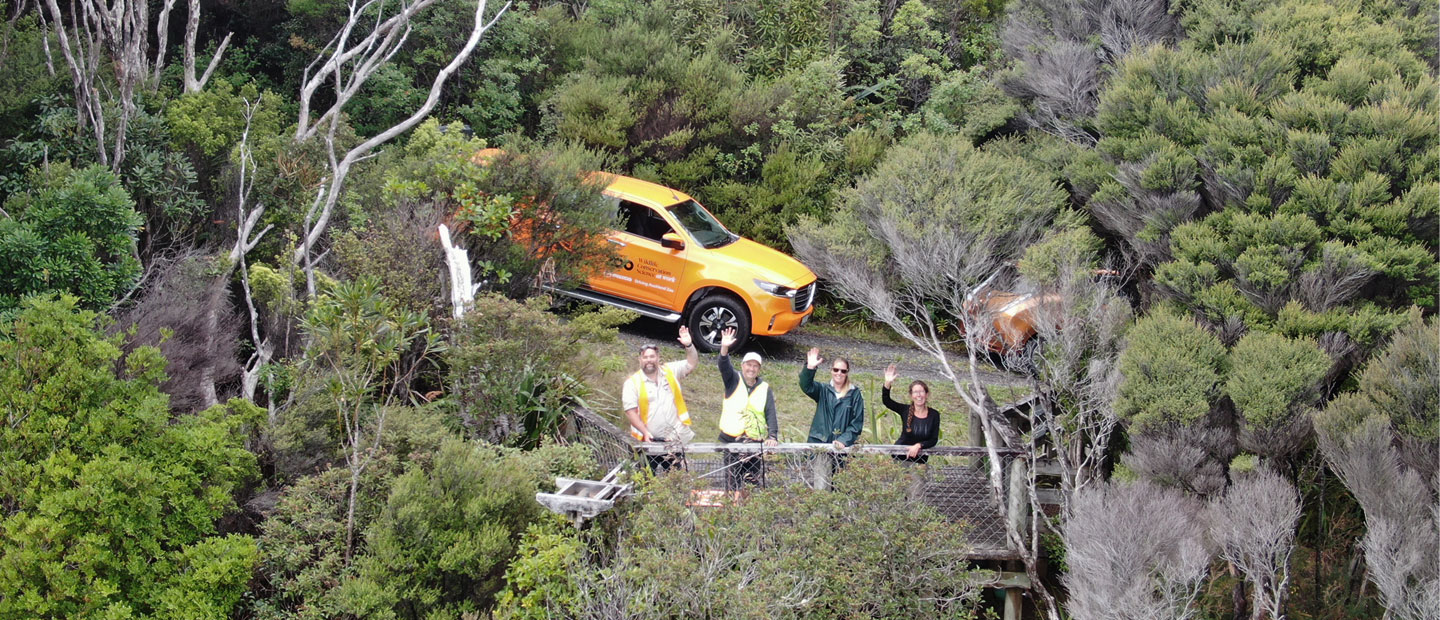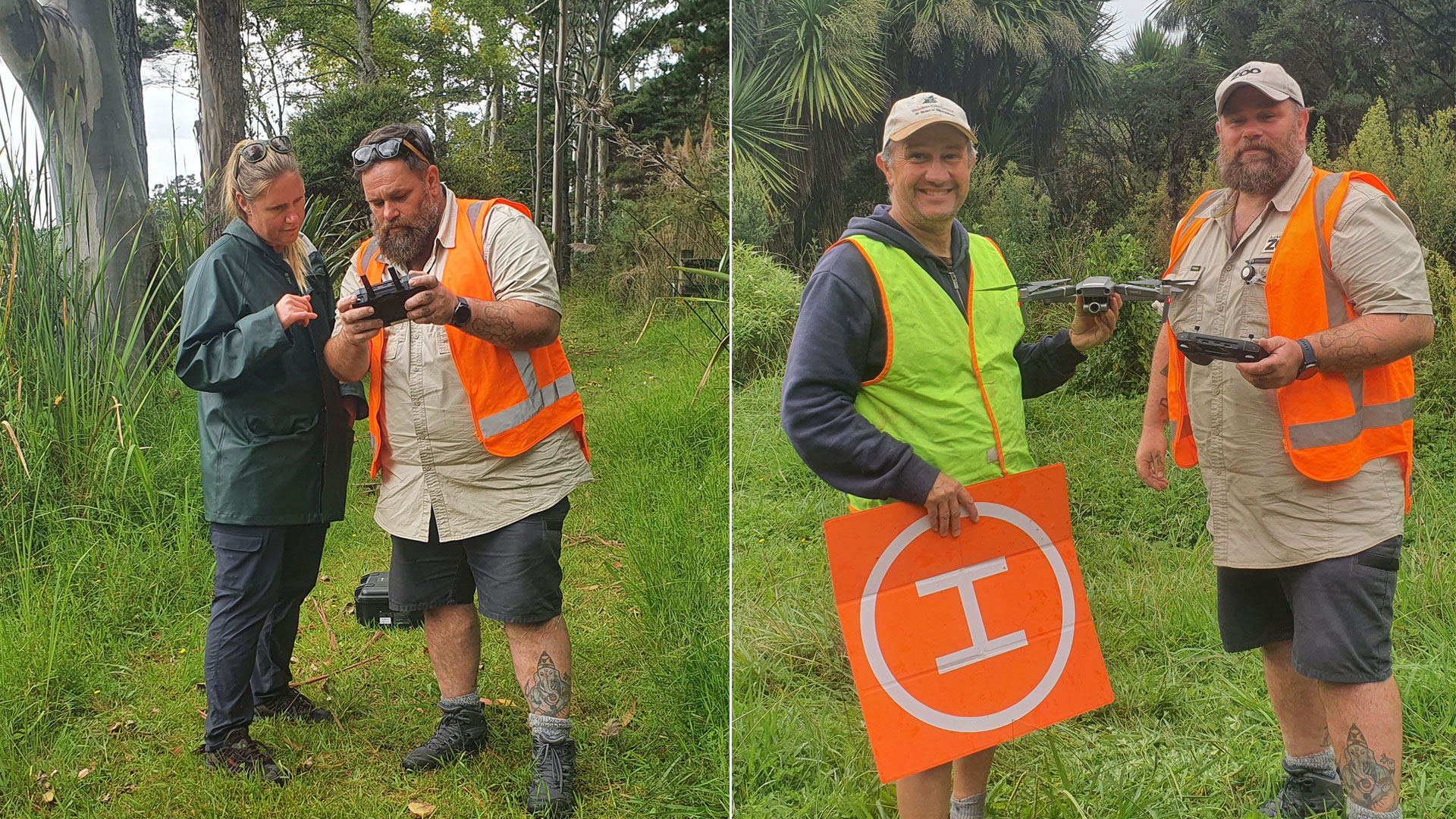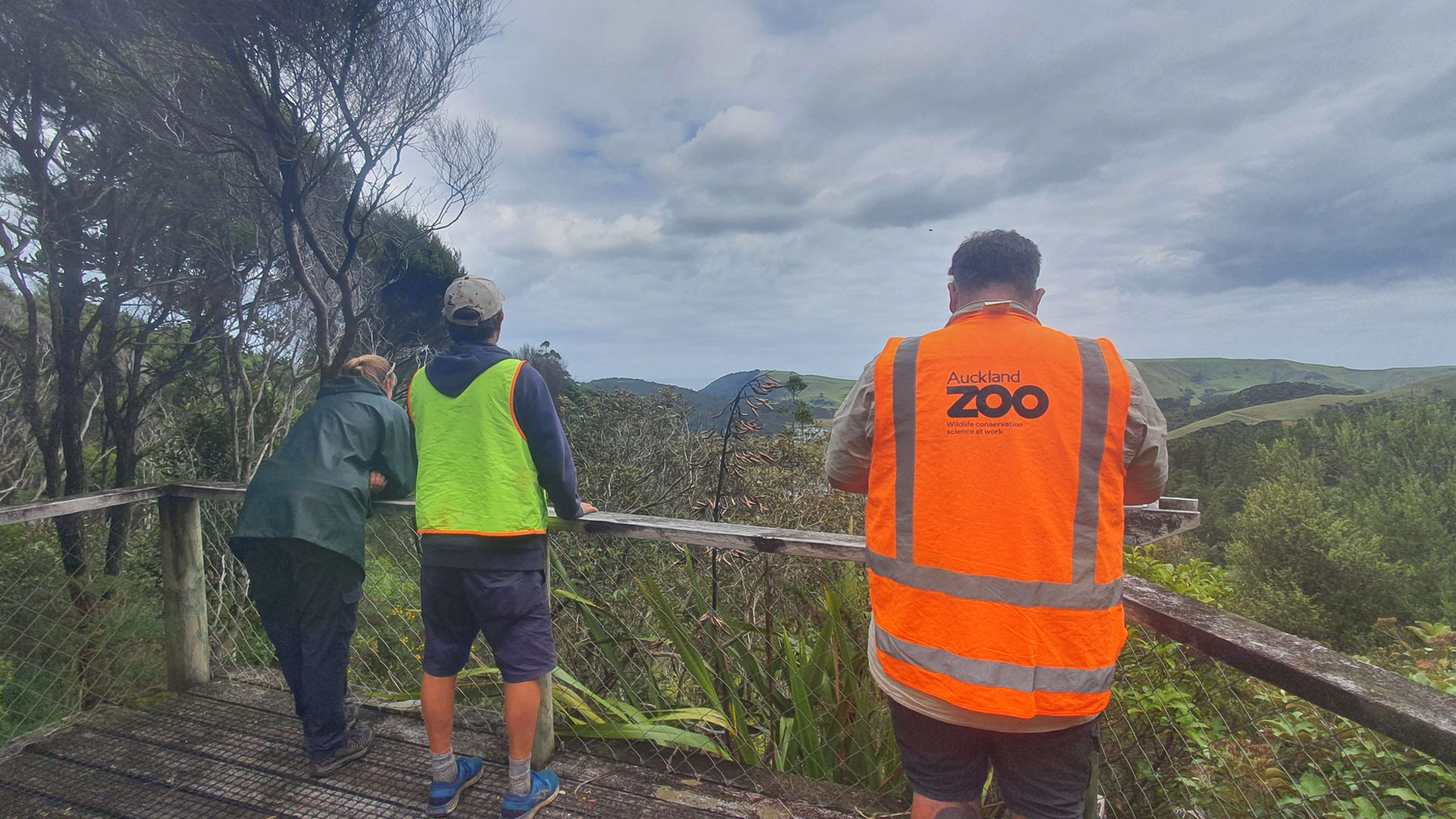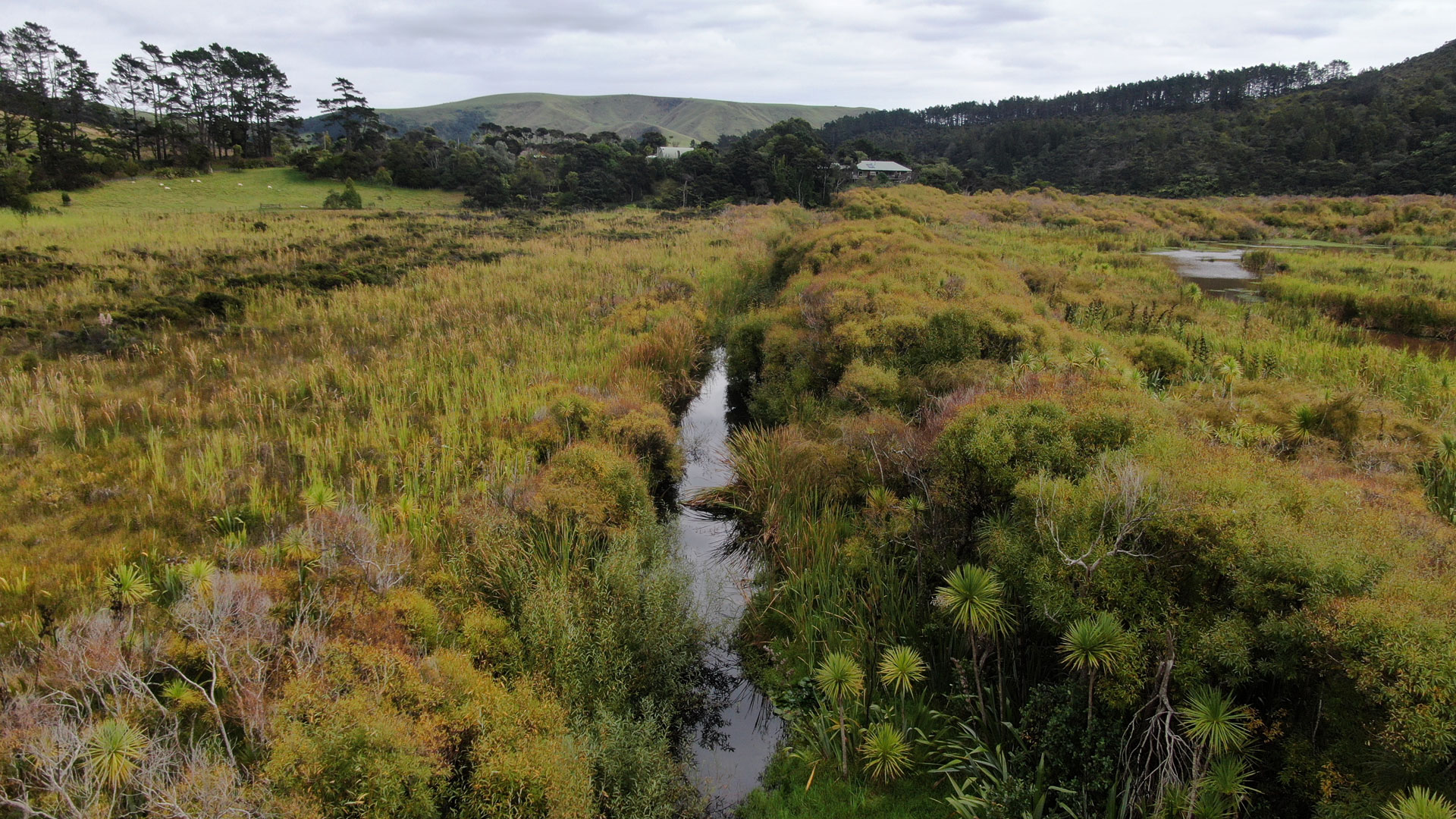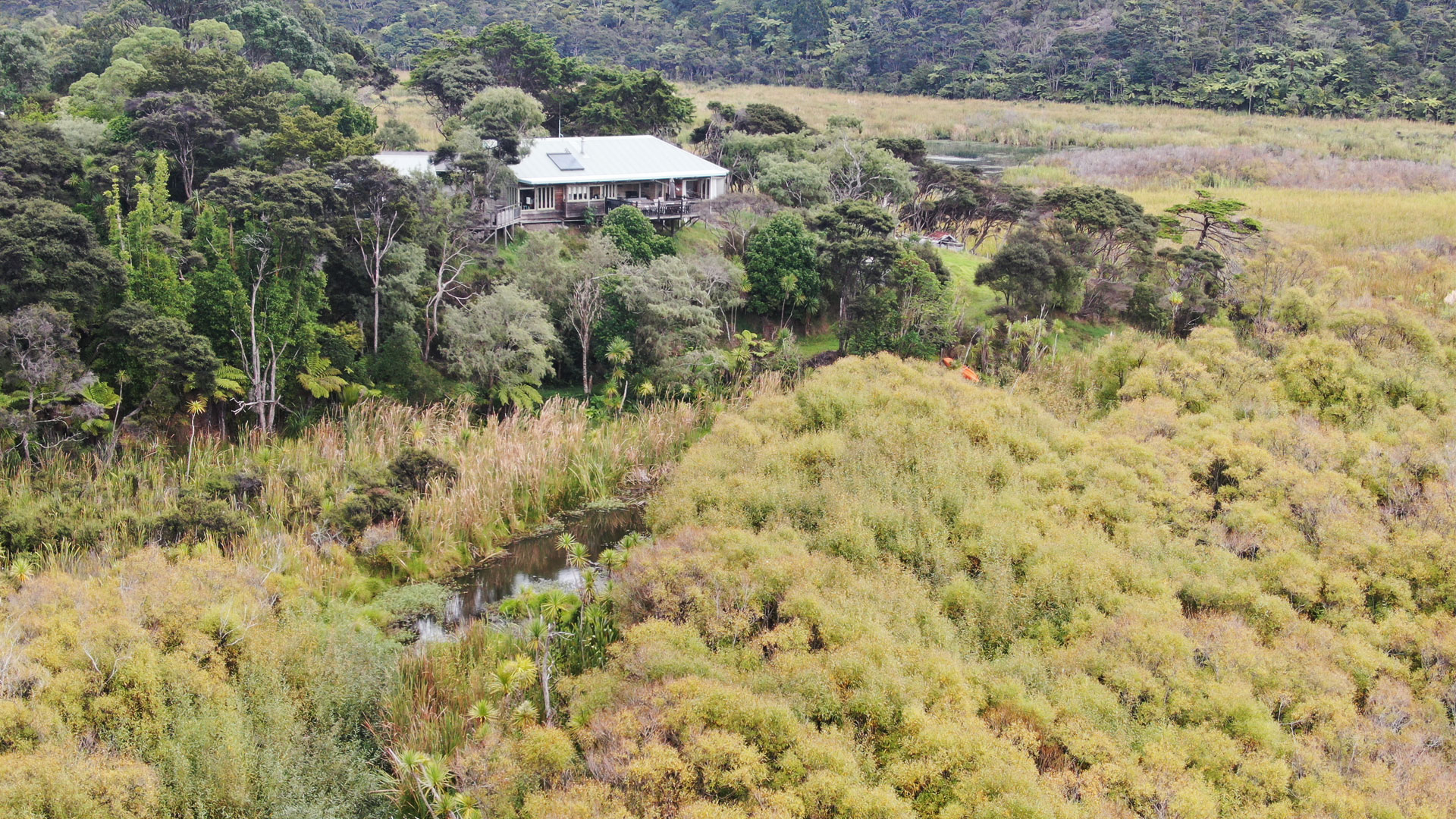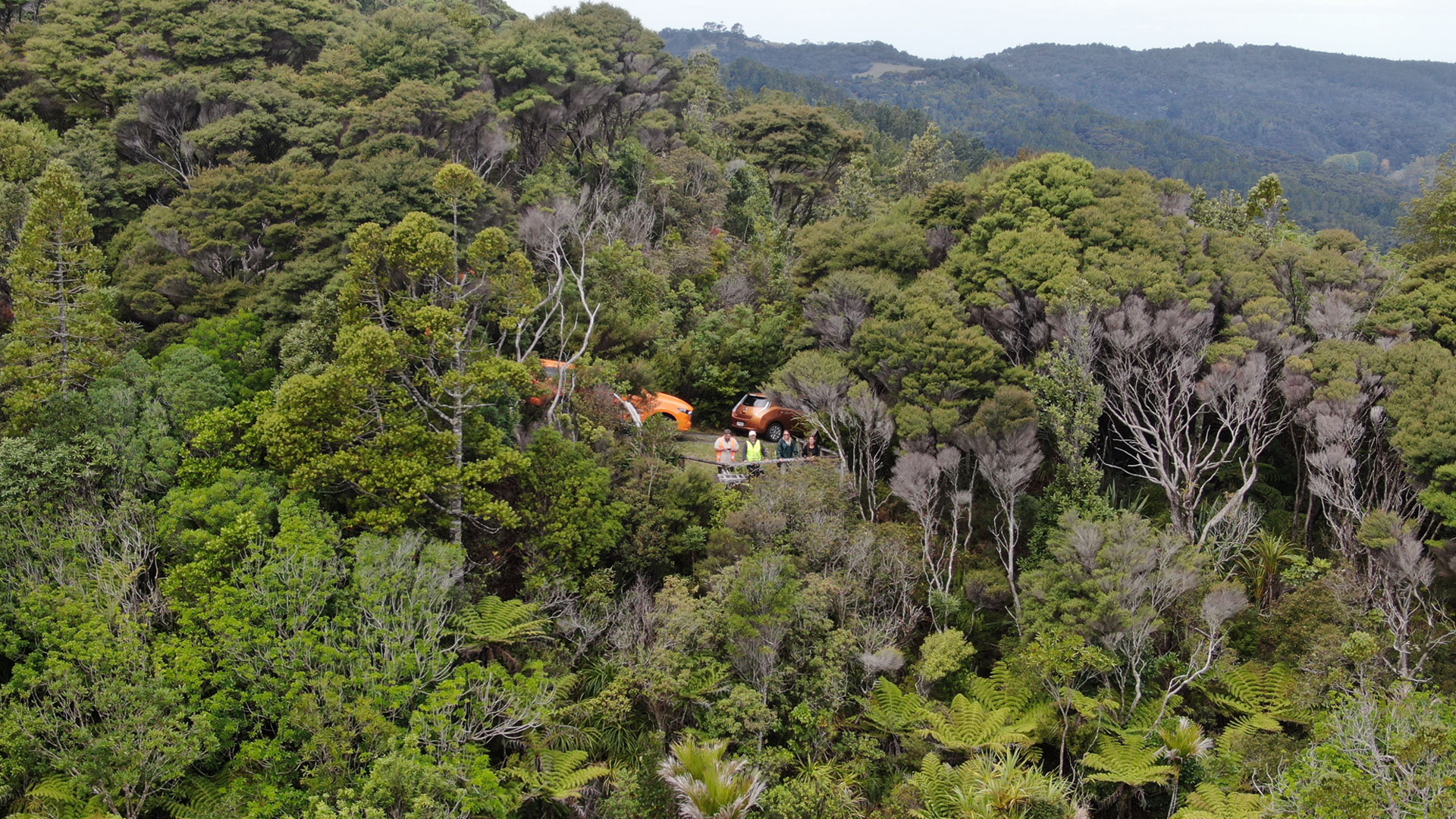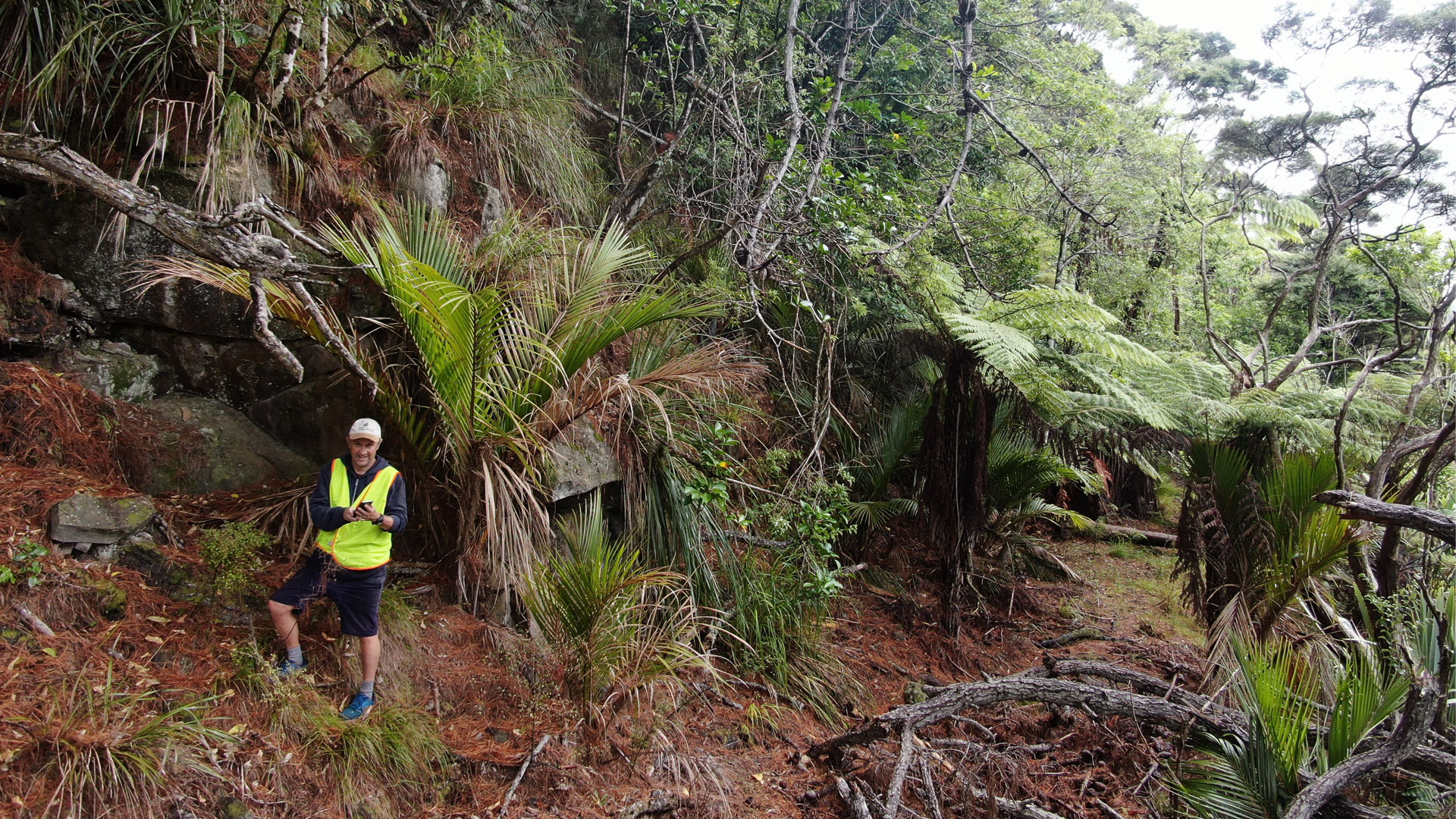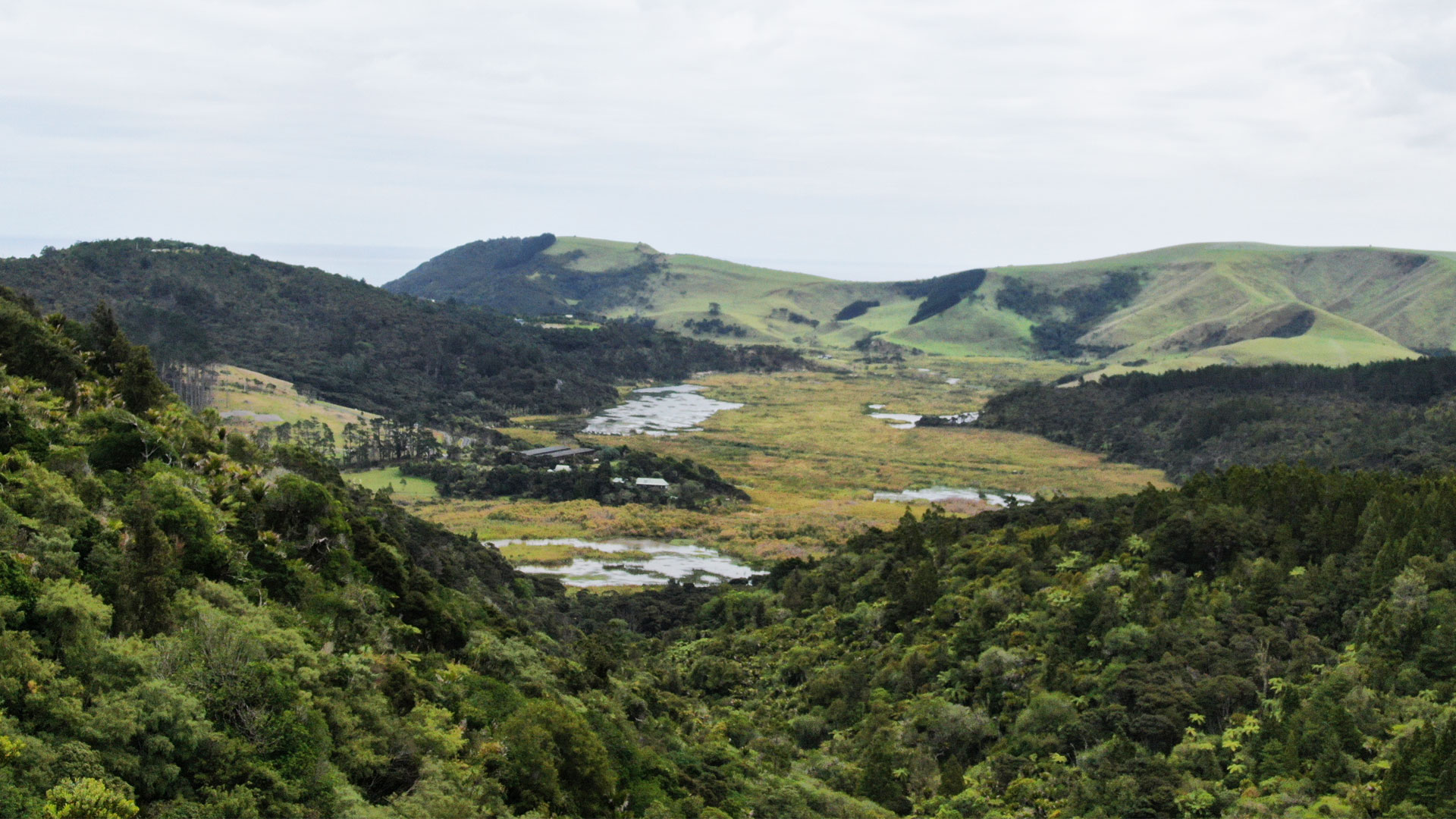We recently helped our friends and conservation partners at Matuku Reserve gain a birds-eye view of the landscape they’re working hard to conserve.
A beauty to behold, Matuku Link Reserve is 37 stunning hectares of wetland and native bush set within Bethells’ Valley and adjacent to Te Henga Wetland, the largest wetland in the Auckland region. It’s home to at-risk Aotearoa species such as pāteke and pūweto (spotless crake) as well as native eel, crayfish, and a vast array of forest birds.


